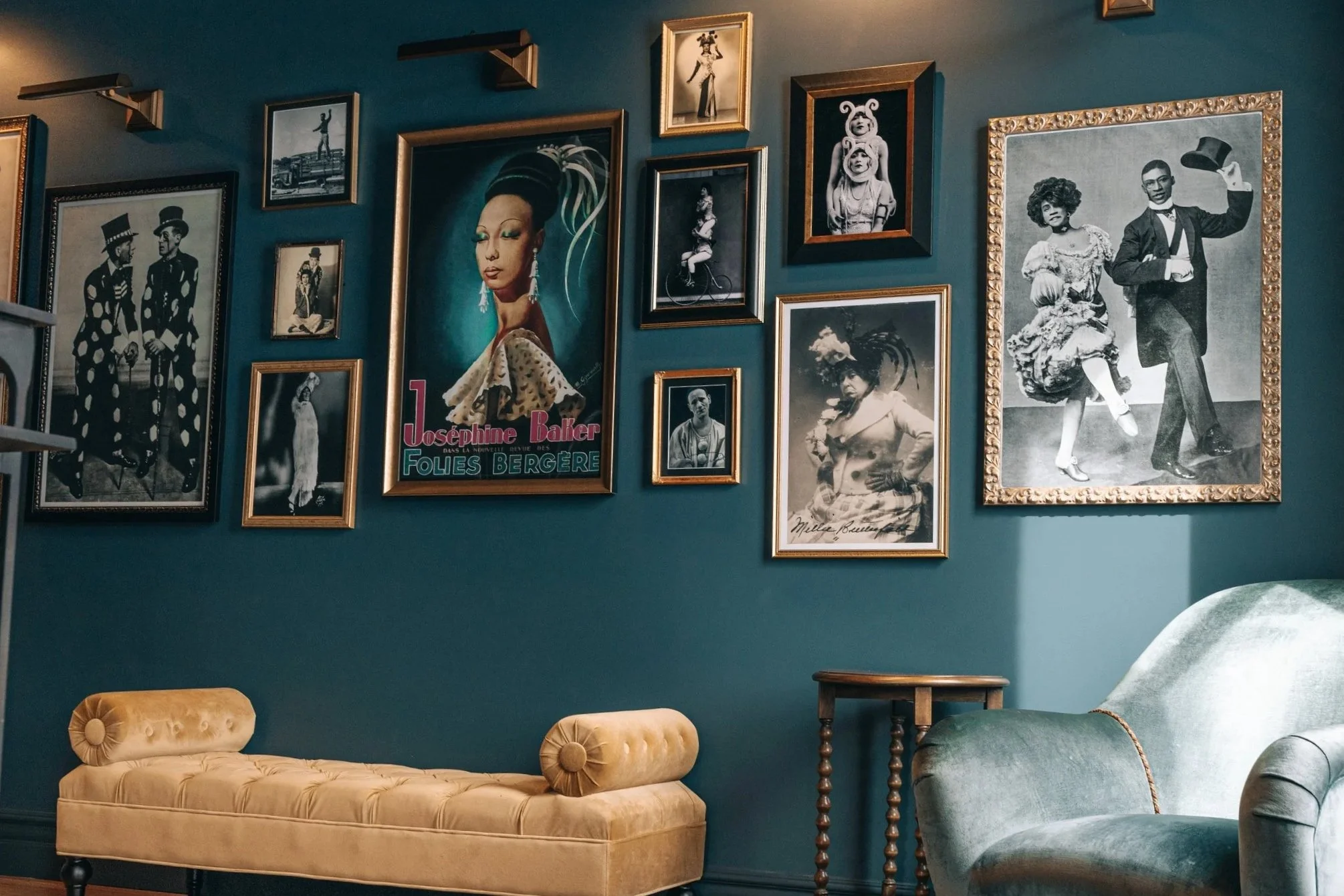
history of the savoy
location
Built in 1889 and located at the crossroads of RiNo and Five Points/Curtis Park—Denver’s oldest residential neighborhood—the building was first known as Bourne Hall, then Dania Hall, home to the Danish Sisterhood Ellen Lodge #21, which hosted choral concerts from 1905 to 1920. Later, it became the site of Rodelle Vanilla, the “House of Finest Bourbon Vanilla,” where vanilla was manufactured on the premises. It's said the sweet scent of vanilla lingered in the building well into the 1990s. Over the years, the victorian-era ballroom has also housed a photography studio, served as a private living room, and now operates as The Savoy—continuing its community-first mission as a social hall for live theatre, music, and dance. Today, The Savoy remains a place where history, culture, and community converge
Location Built in 1889, the Savoy Denver is situated at the crossroads of RiNo and Five Points/Curtis Park in Denver’s oldest residential neighborhood. This classic Victorian style building has been beautifully renovated in a manner that honors its rich, historic charm.
History Since the early years, The Savoy’s upstairs ballroom has been used as a “social hall” for clubs, community meetings, and a variety of events and live performances. The lower level was home to numerous merchants, the best-known being Rodelle, “The Finest Bourbon Vanilla” which was manufactured from 1948-1982. Today, The Savoy remains a place where history, culture, and community converge.
Legacy Over the decades, The Savoy has served as a creative space for artists and entrepreneurs. It remains committed to recognizing the neighborhood’s cultural legacy by continuing a community-first mission as a place for social gatherings, live theater, music, and dance. A Surcharge for Indigenous People (1% SIP) is included with every event as a gesture of reparative acknowledgement.
Bourne hall
The actual building permit dates to 1889. The original owner was John Bourne, according to historic records. The building was part of the Story and Appleton addition to the City of Denver. The permit states that it was a two-story structure and cost $9,000 to build. A single name, "Scholtz", is listed as the architect. The legal designation is L15 and 16, Block 48.
Sanborn Fire Insurance maps from 1890 show the 3 lower units labeled "Stores", one of which is labeled "Drugs".” Note: the City of Denver Directories and Sanborn Fire Insurance maps indicate the property historically included the even-numbered addresses between 2700 and 2708 Arapahoe St.
1904 maps show a "Bakery" on the first floor and a brick oven is identified as an outbuilding in the back. A drugstore is located in one of the lower units. The 2nd floor is listed as "Hall". Note: The second floor is consistently labeled "Hall" on these maps until 1936.
occupants
The social hall on the second floor was transferred to "The Danish Hall Association" in 1907. There is an article that appeared in the Svensk-Amerikanska Western Newspaper on April 2, 1908, announcing that the Choral Society Orpheus had moved its headquarters to "The Danish Hall" where they would have an improved "exercise room" (better in "space and convenience" than the old one) for rehearsing, which would bode well for their upcoming concert. Everyone was "eager'' to hear the Choral Society's rehearsals.
Mrs Celia Lub, a grocer, consistently appears in the City Directory from 1910 until 1934 in unit 2700 Arapahoe. Several other grocers are listed in this unit: John Burdette Bush, 1935-1938; Raymond Vigar, 1939; Anthony Bongiorno, 1940-1945; The 27th Street Grocery 1945.
From 1948 until 1975, the 2700 unit becomes a Rodelle vanilla extract factory. More about Rodelle here: Illini Industries (extract-candy manufacturers) begins to occupy the 2702 unit in 1948 and is listed there until 1966. Fire Insurance maps specify "Flavoring Extract Factory, all units" in 1974. Note: The building addresses (2700-2008) are combined in records after 1970 and are referred to as 2700 Arapahoe St.
The property is referred to as "Residential" and a Photography studio in 1980. It is converted into "Apartments" in 1985-1995. In 1999, a coffee house called "The Vanilla Factory Coffee Co" is located in the building.
In 2004, several businesses are listed: Dance for Today; Grass Roots Neighborhood Development; Laura Manthey Design; Seasons Mind and Fitness; Sid LLC; Urban Roadhouse; Vanilla Coffee Co. In 2013, Mark Regan Salsa is listed as an occupant until 2017. The building was bought by Toe Tapping Shiva, LLC, in 2009, and the 2nd-floor ballroom was re-instated.
Since 2018, the building has been owned and renovated by the Frank Family.



